

The magazine of the photo-essay

August 2020 back issue
Cambodia:
A Contemporary Renaissance

“A free, really high quality photo-essay magazine. Fabulous!”
Stephen Fry. British actor, writer and film maker

Against a backdrop of world class temples, Cambodia is finally emerging from the tragic years of genocide, to a
contemporary renaissance.
Once ruled by god-kings and built by thousands of master masons and artisans, Angkor and its ruins exemplified the
peak of classical Khmer architecture, design and art. And as a modern traveler would discover today, the spirit of artistry
seems to be borne out of the land’s soul from where Angkor sits, as the amount of creativity being churned out of Siem
Reap - Angkor's contemporary offspring, is staggering and itself profoundly compelling.
Most people come to Siem Reap for the magnificent temples of Angkor without realizing that there has been an
explosive and veritable renaissance in art, design, food, fashion and the revival of ancient traditions in silk weaving,
pottery and so much more. Cool hotels, hip new cafes and restaurants, polished boutiques and handsome coffee
houses are popping up all over and there is a new sort of palpable fresh energy. In the words of Eric Raisina,
internationally acclaimed Madagscar-born designer, “When I visit the temples, I feel they were made with happiness and joy -
and I feel that same energy here in Siem Reap. I am part of a group of amazing makers; we inspire each other. If you are curious
enough, Siem Reap is a fabulous place to live. There is so much talent and skill.”
- Catherine Karnow, Loven Ramos
by Catherine Karnow
www.catherinekarnowphotoworkshop.com
National Geographic photographer, Catherine Karnow’s unmissable Speaking Presentations on Zoom
this August:
August 14
Cambodia - A Contemporary Renaissance
August 21
The Creative Eye - On Assignment for National Geographic
August 28
Switzerland - Struggles and Success
Register Here for Catherine’s presentation(s)
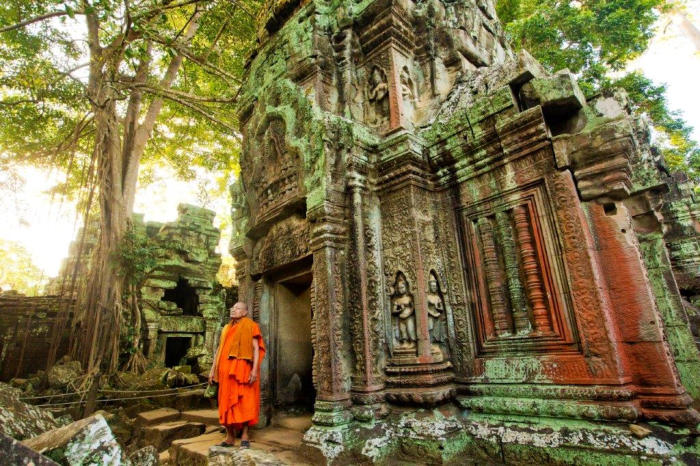
A monk pauses during his visit to Ta Prohm temple. While the older temples of Angkor were Hindu, and dedicated to
Vishnu and Shiva, Ta Prohm, built in 1186, during the reign of King Jayavarman VII and dedicated to his mother, is a
Buddhist temple.
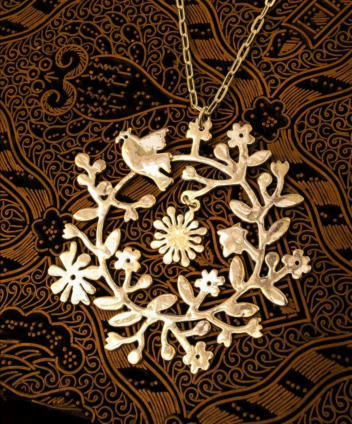
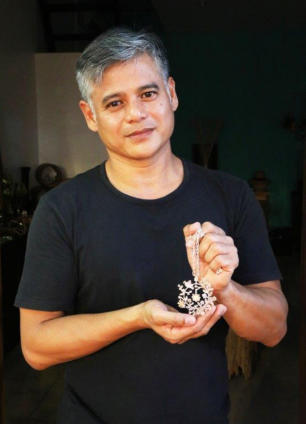
The jewelry designer, Ly Pisith, suffered under the Khmer Rouge as a child; his entire family was killed. At the age of
twelve, he lived homeless in Phnom Penh before walking alone to the Thai border, and then escaping into Thailand. He
spent the next twenty-five years in France, and returned to Cambodia in his forties. All his jewelry reflects the years of
extreme hardship and his search for peace within. The dove in the necklace, left, represents freedom, as does the freely
moving flower at the center. The necklace is a garden: his hope and belief that we all can cultivate our own garden -
ourselves - as we wish, and be free to nurture what we grow.
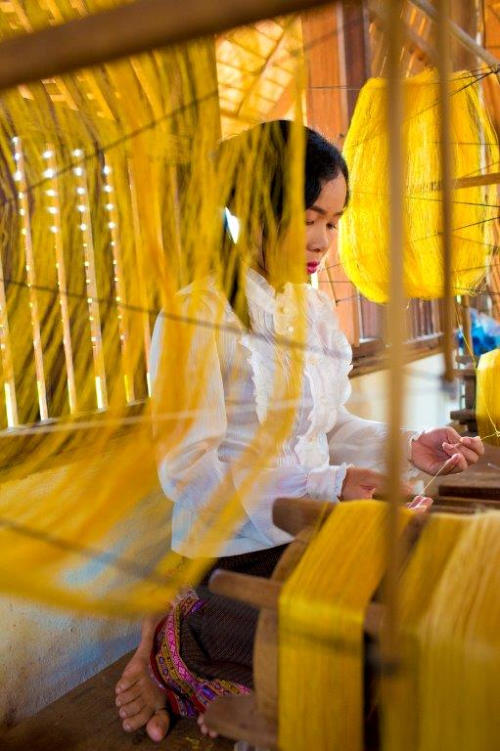
At Golden Silk, outside Siem Reap, weaver Pocht Sam spins very fine rare golden silk,
removing all the impurities from the thread. Workers here employ methods passed
down through generations of silk craftsmen – from handpicking cocoons to making
the natural dyes and echoing patterns carved in stone in the temples. A scarf or wall
hanging can take up to a year to create a single unique piece.
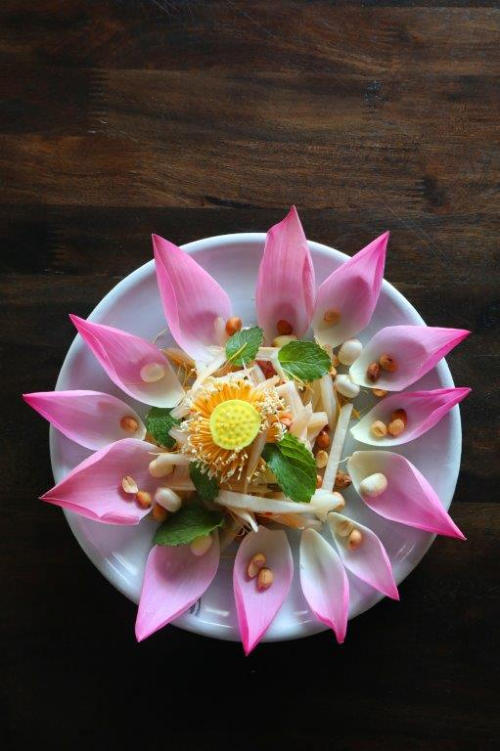
At the upscale restaurant, Khmer Touch, chef-owner Somontha Oeng's Lotus Salad
uses every part of the lotus. The lotus is a deeply important flower to the
Cambodians, and has multiple meanings and purposes. Its roots thrive by growing in
mud. Symbolically it represents the the idea that out of adversity springs beauty. The
lotus is considered extremely healthy; in Cambodia pregnant mothers always drink
lotus flower tea.
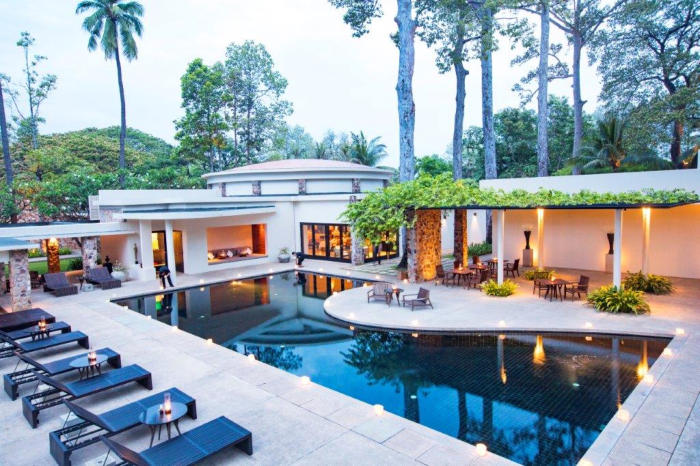
The Amansara hotel, designed by French architect Laurent Mondet in 1962, was Prince Sihanouk's guesthouse, where he
entertained royalty and celebrities, including Jackie Kennedy and Charles de Gaulle in 1967.
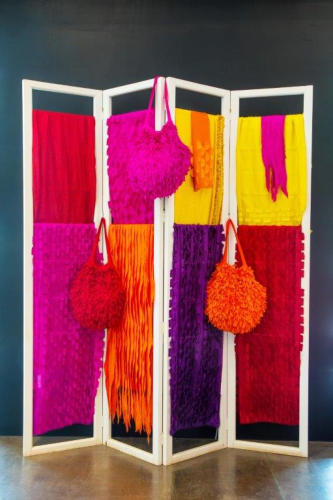
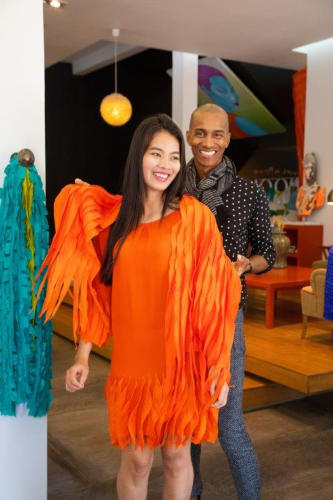
Madagascar-born fashion designer Eric Raisina, here with model Senat Roun, learned his craft in Paris working for Dior,
before moving to Siem Reap and recreating an entire new world of silk. His playful fabrics are a celebration of silk’s
modern incarnation. Fusing Cambodian silk with his colorful Malagasy roots and a Parisian flair, he creates sculptural silk
pieces that are both elegant and fun. "I am part of a group of amazing makers; we inspire each other."
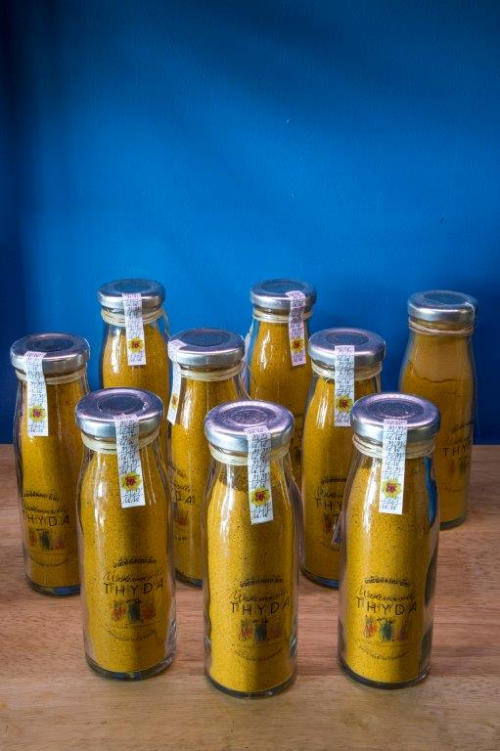
At the trendy Kandal Village boutique, Mademoiselle Thyda, locally sourced spices
from the highlands of Cambodia are for sale in handsomely designed packaging.
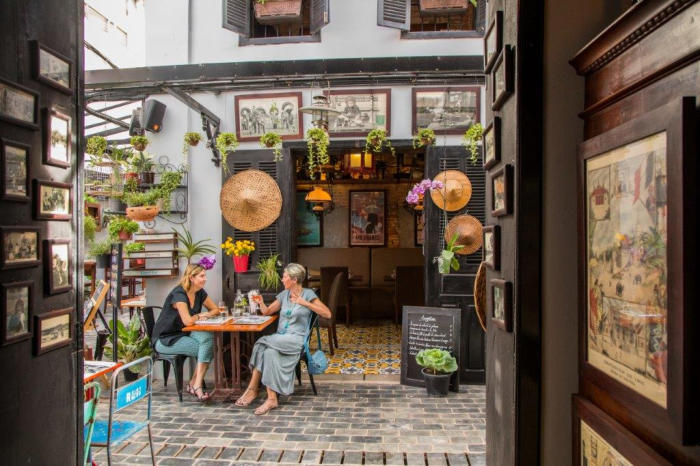
Sandrine Leclerc and Eve-Marie Minart enjoy a glass of wine at Le Malraux, a restaurant that suggests both the era of the
French rule in Cambodia as well as the new cosmopolitan Siem Reap. Here you can get a local coconut curry or a "steak
frites" Parisian style. Located in one of the alleys near the Old Market, Le Malraux is decorated with vintage photos and
objects belonging to the owner's father, who was in Cambodia during the "Indochine" time.
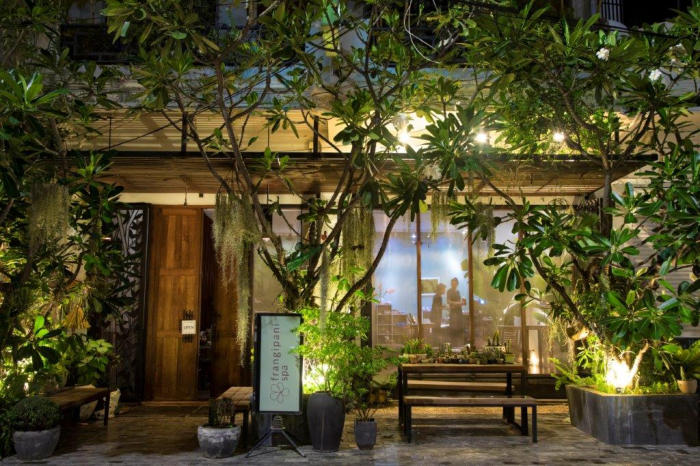
Kandal Village is the new trendy neighborhood of Siem Reap, where, if you have an idea for a cafe or boutique, it's easy
to rent space and open up your shop. Frangipani Spa is an oasis in the hubbub of the town.
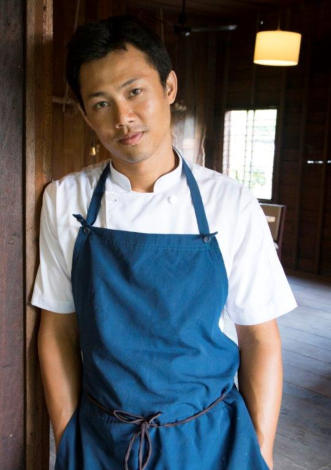
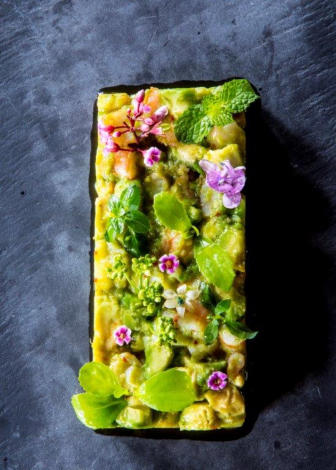
Chef Pola Siv grew up in a poor family, and, saving every penny, found his way to a rigorous culinary education in
Switzerland. At Mie Café, he prepares outstanding Khmer and western cuisine, combining his Swiss culinary training with
an intuitive knowledge of original Khmer dishes. His avocado "terrine" uses wild flowers and herbs, for an east-west
fusion.
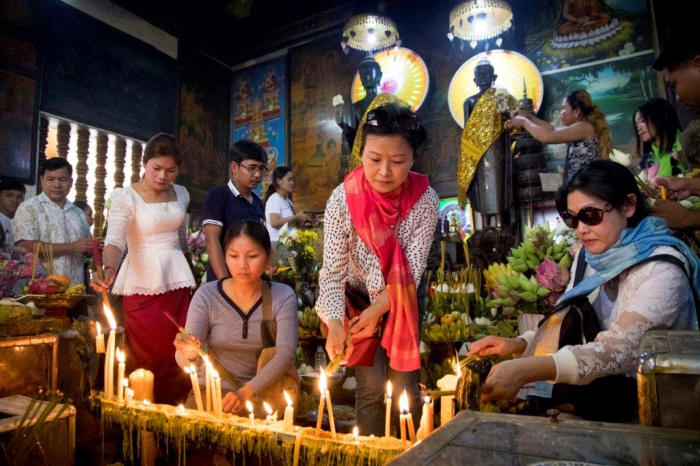
On a celebration day, devotees perform rituals for good luck and good health at the Preah Ang Chek Preah Ang Chorm
shrine.
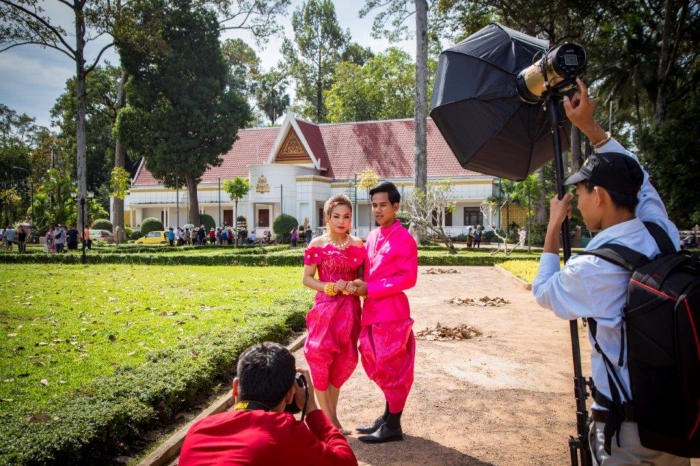
A wedding couple pose for photos in front of the Royal Residence.
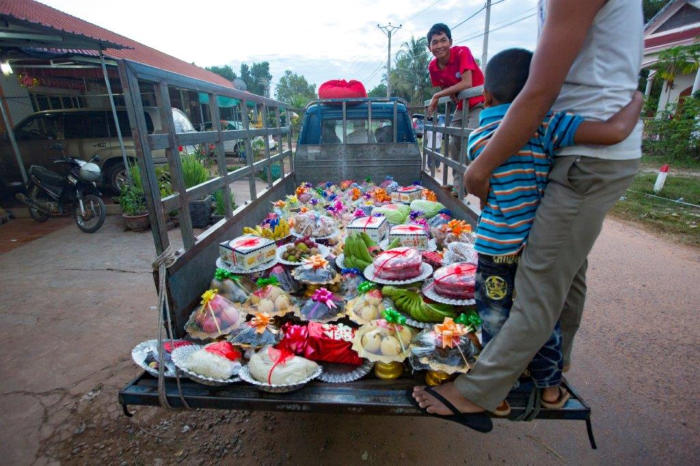
A truck carries dozens of plates of carefully prepared dishes to a village wedding.
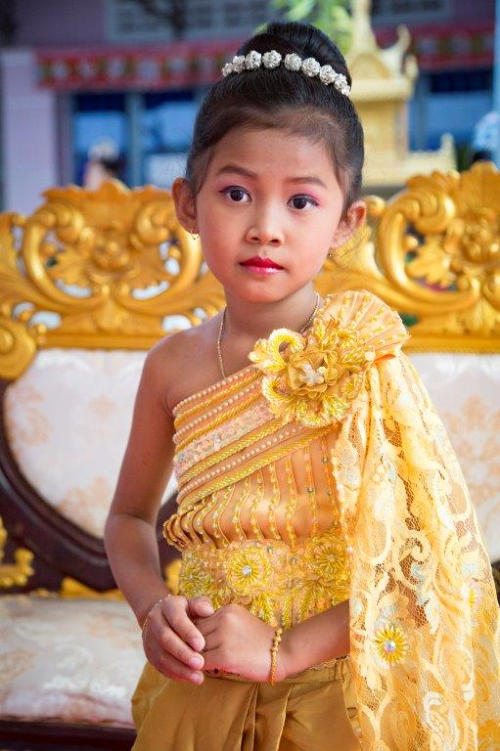
At a local wedding in a small village outside Siem Reap, a child is dressed like a
princess.
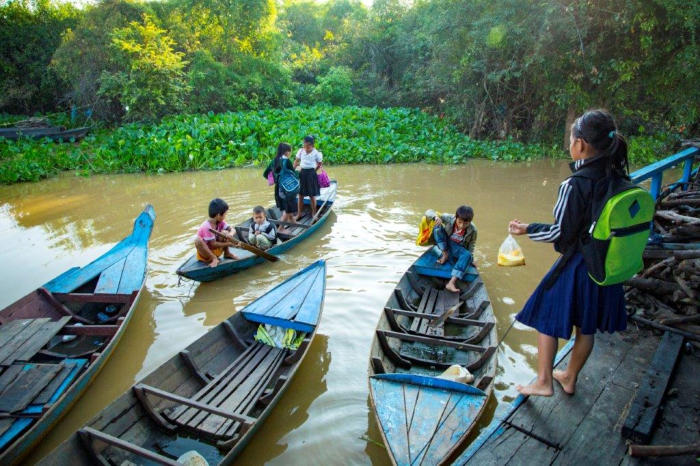
Vietnamese immigrant children arrive by boat to a floating school on the Tonlé Sap lake. There are thousands of ethnic
Vietnamese in Cambodia, many living in boats on the water, as they have no rights to land.
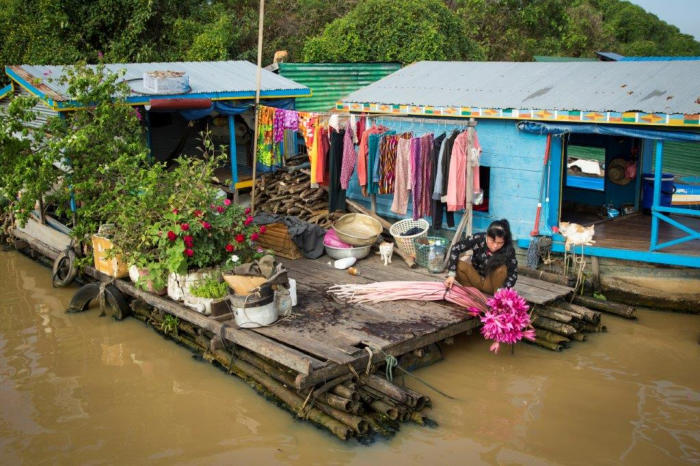
The Tonlé Sap, the largest fresh water lake in Southeast Asia, has exceptionally dramatic changes in water levels
according to the season. In the monsoon, houses float like boats, as seen here; whereas in the dry season, they are on
stilts high above the lake bed. A woman gathers flowers that she has pulled right out of the lake.
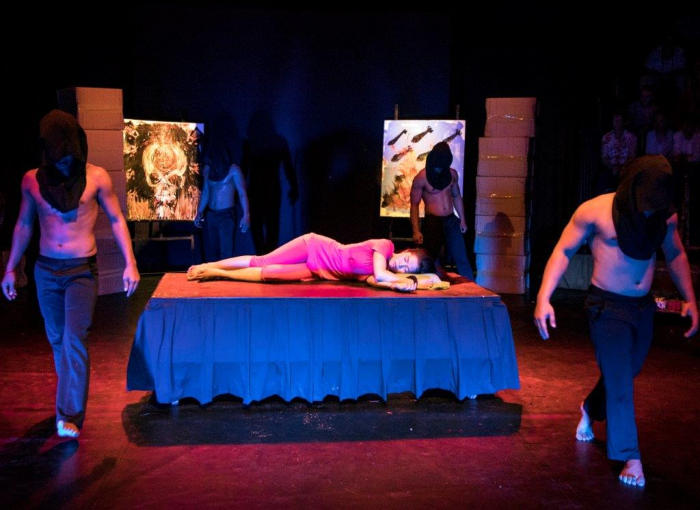
Performers in the Phare troupe act out "Sokha", a story about a young woman suffering a nightmare about the Pol Pot
time. The masked figures represent the Khmer Rouge. The young performers of Phare, at-risk youth who come from
exceedingly poor backgrounds, train to extraordinarily high levels of expertise to become some of the most highly skilled
performers in Southeast Asia. Not only do they use art to heal the trauma of Cambodia's genocide, their work breaks the
cycles of poverty, as they are able to support themselves and their families. Some go on to perform around the world.
In the time of Covid, Phare is at risk of being shut down. Please consider helping: https://tinyurl.com/y53yeps4
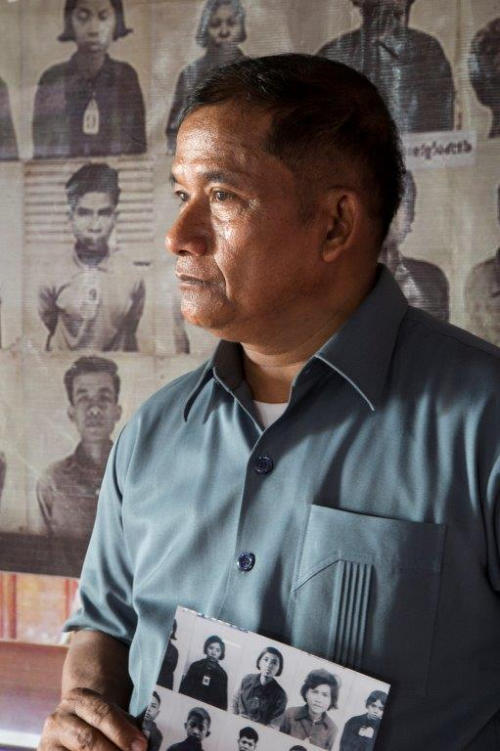
Nhem En was a principal photographer under the Pol Pot regime, making fast portraits
of thousands of prisoners at Phnom Penh's Tuol Sleng prison just before they were
executed. He had only a few seconds per person, and if he made a mistake with the
focus or the prisoner blinked, he himself risked being killed.
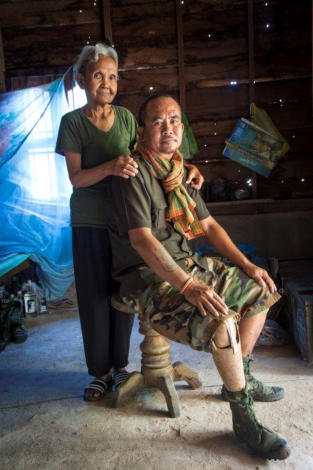
Left: Landmine survivor Suon Rattana, 55, shown here with his mother, was a child soldier in the Khmer Rouge; he
stepped on a landmine on his 28th birthday. He recently opened a museum that shows the history and dangers of
landmines, and works tirelessly with disadvantaged children to help better their lives.
Right: Sovan Lach, 54, lost an arm and a leg to a landmine accident. For many years the only way she could make a living
was by begging on the street. Now she is able to make money playing in a music group; she plays small bells with her
toes.
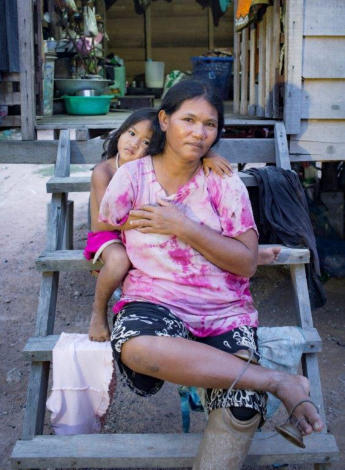

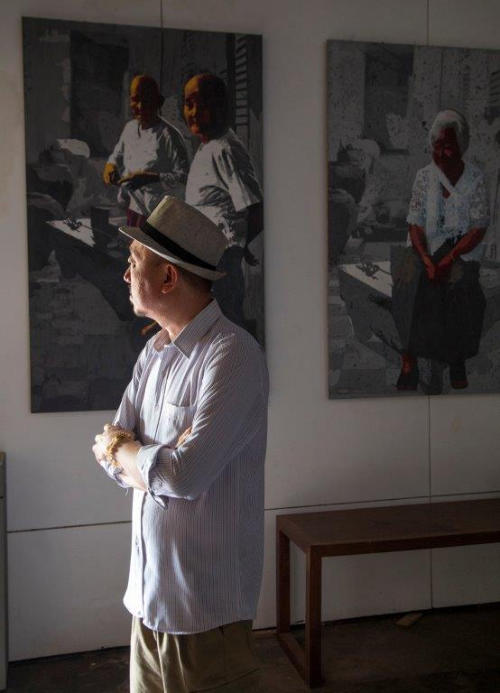
Artist and Khmer Rouge survivor, Lim Muy Theam, escaped the civil war by foot,
before fleeing to France. He returned to Cambodia as a master lacquer artist, re-
teaching this dying craft to a new generation of artisans, while also creating his
personal work - haunting portraits of Khmer Rouge victims.
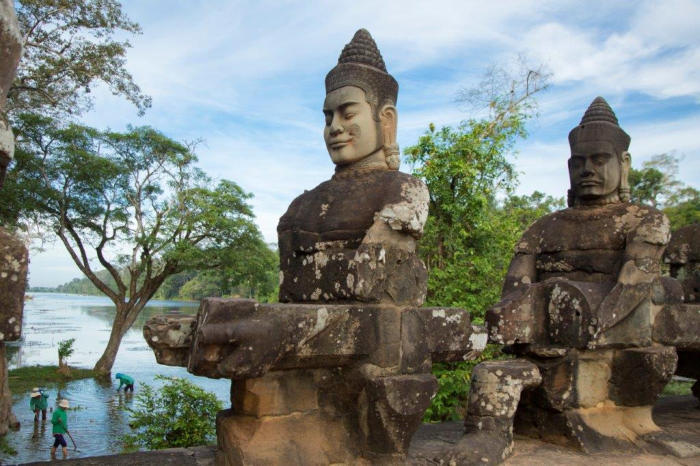
Gods line the South Gate, entrance to the Angkor Thom temple complex.
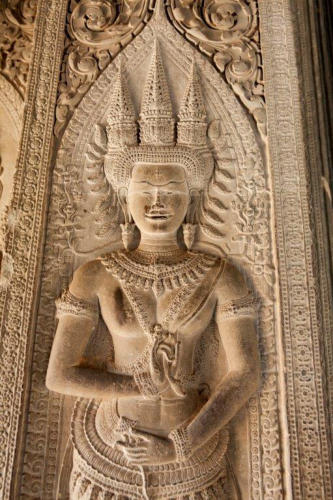
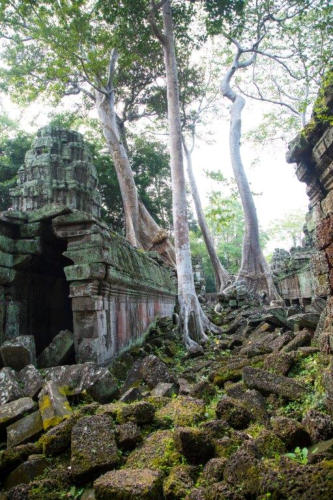
Left: The temple of Angkor Wat has over 2000 Apsaras, or female celestial beings. The holding of the lotus is a gesture
that is part of a dance symbolising immortality.
Right: Ta Prohm has been left to the power of nature, seen by the many trees whose roots are growing all over the
temple structures.
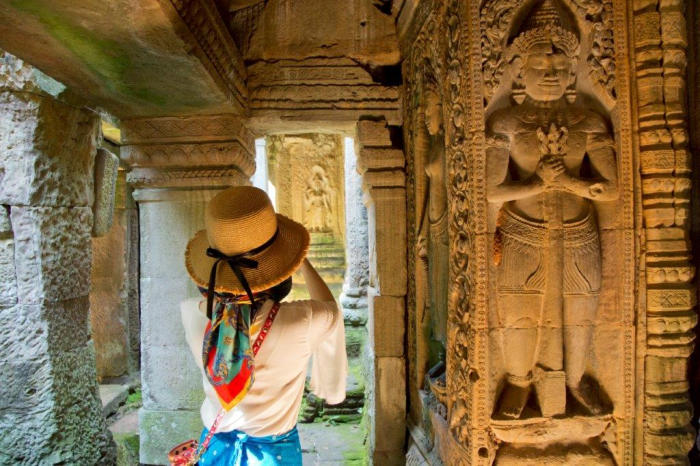
In Ta Prohm temple, a traveler takes a photo next to a carving of a temple guardian. In ancient times 18 chief monks, 600
dancing girls and a congregation of more than 2000 people used to live in this temple, which was once also a Buddhist
University.
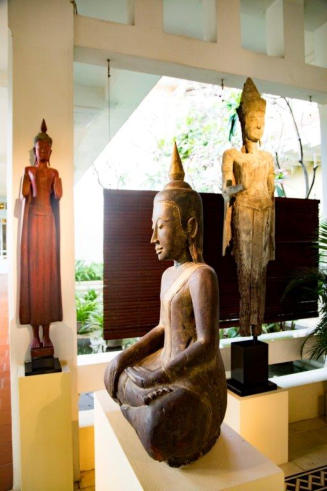
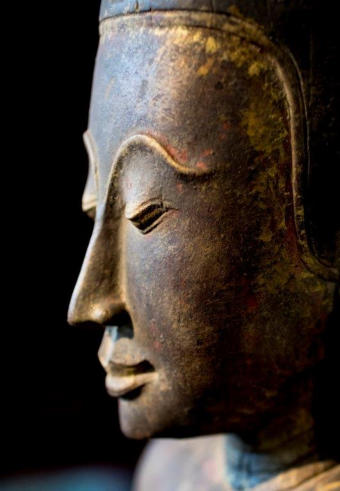
The Raffles Grand Hotel d'Angkor displays a magnificent collection of Buddhas from all over Southeast Asia. The hotel
was built in 1932 and is considered one of the great historic hotels of Asia.













